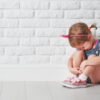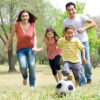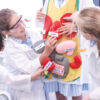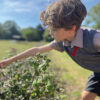by Lisa Costigan, Rottingdean Dental Care
Lisa Costigan from Rottingdean Dental Care has practiced locally for 27 years. During this time she has dealt with many dental injuries and is very keen that all parents should know what to do if their child damages a tooth.
What should I do if my child damages a primary (baby) tooth?
You don’t have to do anything yourself to the tooth. However it is important that you visit your dentist as soon as possible. NEVER put back a knocked out primary (baby) tooth as you could damage the permanent tooth below.
Why is important that I visit the dentist straight away?
Your dentist will want to assess the injury and monitor the tooth. If it has become very loose they may want to remove it as there could be an airway risk. If it has been mildly displaced from the socket they may be able to reposition it. Sometimes if the movement is very slight the tooth will reposition spontaneously.
How can I care for the injured tooth at home?
Avoid giving hard food for two to four weeks and if possible avoid use of a pacifier or nursing bottle. Remember to keep brushing the tooth as it is important to keep it clean. Look out for any changes around the injured tooth. Colour change is a common sign of primary (baby) tooth trauma and may range from yellow to grey to black. Always return to your dentist with any concerns.
Can an injury to a primary (baby) tooth damage the unerupted permanent tooth?
During the first years of life the primary (baby) teeth are very closely related to the permanent teeth which are forming inside the bone. When injury occurs in the primary teeth in this period it can affect the appearance of the permanent teeth, which could erupt with white or brown marks or a deformation in the crown. It may also disturb the eruption time of the permanent tooth.
What should I do if a permanent tooth is broken or knocked out?
• Find the tooth. Hold the
tooth by the crown (the white part), not by the root (the yellow part).
• Re-implant immediately if possible.
• If contaminated rinse briefly with cold tap water (do not scrub) and put the tooth back in place. This can be done by the child or an adult.
• Hold the tooth in place. Bite on a handkerchief to hold it in position and go to the dentist immediately.
• If you cannot put the tooth back in, place in a cup of milk or saline. When milk or saline or not available, place the tooth in the child’s mouth (between the cheeks and gums).
• Seek immediate dental treatment as your dentist will need to take an x-ray and place a splint on the adjacent teeth. Follow up treatment will depend on the stage of root development of the tooth.
Lisa advises that due to the frequency of the tooth injuries all parents should download the Dental Trauma First Aid App which is endorsed by IAPT (International Association of Dental Traumatology).
Rottingdean Dental Care was opened in 1982. It became the first practice in Sussex to hold both national quality standards BDA Good Practice and Investors in People.
Email: info@rottingdeandental.co.uk


 Safety
Safety Meet new friends
Meet new friends











